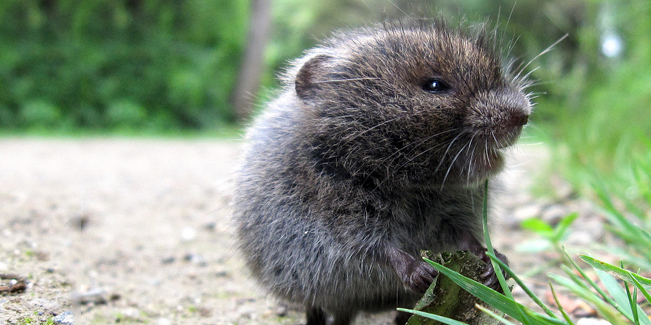Combat Vole Invasion: Professional Methods for Vole Control
Combat Vole Invasion: Professional Methods for Vole Control
Blog Article
Mastering Vole Bug Control: Comprehensive Insights on Invasion Avoidance and Therapy Strategies
As homeowner and caretakers, the presence of voles can pose a substantial obstacle to preserving the integrity of our exterior rooms. Recognizing the complexities of vole behavior is vital in creating reliable parasite control strategies. By acknowledging the refined indicators of vole problem at an early stage, we can take proactive measures to stop extensive damage. In this discussion, we will certainly discover the nuances of vole behavior, explore the identification of infestation indications, and discover one of the most reliable prevention and treatment techniques. Keep tuned to uncover the understandings that will equip you to master vole insect control and protect your property versus these elusive rodents.
Understanding Vole Behavior
Analyzing the foraging patterns of voles offers valuable insights into their habits and habitat preferences. Voles, tiny rats resembling computer mice, are herbivores known for their underground tunneling activities. By observing their foraging behavior, researchers can gain a better understanding of where voles favor to develop their habitats and the extent of their ecological effect. Voles are prolific dog breeders, with a solitary female qualified of generating several trashes in a year, making it critical to comprehend their habits for reliable pest control techniques.
Study indicates that voles show careful feeding habits, choosing seeds, origins, and bulbs - vole yard damage. This dietary choice influences their foraging patterns, leading them to areas rich in greenery and ground cover. In addition, voles are understood to produce sophisticated passage systems for foraging and nesting functions, showing a high level of versatility to their environments
Understanding vole actions is vital for applying targeted pest control measures that interrupt their environment choices and foraging tasks. By researching their habits, professionals can establish a lot more effective avoidance and treatment approaches to manage vole infestations.
Identifying Indicators of Vole Infestation
Vole invasions can be identified by recognizing particular indications of their visibility in a location (vole control utah). One of the most common indicators of a vole invasion is the presence of surface area paths.
Another key sign of vole infestation is the visibility of tiny burrow openings in the ground. Voles dig superficial burrow systems with multiple entryways and leaves. These burrows work as sanctuary and nesting websites for the voles. Additionally, voles are recognized to leave behind chewed plant stems, origins, and bulbs near their burrow openings, indicating their feeding activity in the area.
Furthermore, vole droppings can also indicate their presence (vole pest control). Vole droppings are tiny, brown, and cylindrical in shape, looking like grains of rice. Finding these droppings along runways or near burrow openings can validate a vole problem. By being attentive for these indications, homeowner can promptly attend to vole problems and prevent additional damages.
Carrying Out Aggressive Avoidance Actions
To successfully reduce the dangers connected with vole infestations, homeowner can proactively apply a variety of preventative procedures aimed at safeguarding their gardens and landscapes. One vital action is to preserve a well-trimmed lawn and on a regular basis remove high weeds and dense plants, as voles are attracted to areas supplying sufficient cover. Mounting barriers such as equipment towel underground around at risk areas like yard navigate to these guys beds can also help avoid vole invasion. In addition, keeping garden locations clean and minimizing clutter where voles can conceal or nest is vital in reducing their existence.
Furthermore, utilizing all-natural vole deterrents like castor oil-based repellents or killer pee can act as efficient safety nets. It is additionally advisable to on a regular basis check exterior rooms for any signs of vole task, such as paths or burrow openings, to address potential infestations immediately. By embracing these positive avoidance methods, building owners can substantially minimize the probability of vole damages and preserve the health and looks of their landscapes.
Reliable Treatment Strategies
Incorporating targeted trapping techniques and utilizing accepted rodenticides are vital elements of efficient treatment methods for taking care of vole problems. Regular tracking and upkeep are also key aspects of effective treatment strategies to ensure that vole populations are maintained under control. By combining trapping, rodenticides, habitat modification, and constant tracking, effective vole pest control can be accomplished.

Monitoring and Upkeep Tips
Regular monitoring allows for the very early discovery of vole task, enabling timely treatment prior to problems intensify. To effectively keep track of vole populaces, strategically positioned traps can be utilized in vole paths or near burrow entries.
In addition, maintaining a clean and try this site tidy landscape is essential in vole avoidance. Clearing up away debris, such as heaps of wood or dense vegetation, gets rid of potential vole habitats. Regularly mowing yards and cutting vegetation assists minimize vole hiding places and lessens their access to food resources.

Conclusion
In final thought, grasping vole pest control calls for a strong understanding of vole behavior, the capacity to identify indications of invasion, executing positive prevention actions, reliable treatment strategies, and regular surveillance and upkeep. By taking a thorough method to vole control, people can properly handle and prevent infestations, inevitably securing their building and bordering environment from damage created by these little rodents.
In this conversation, we will discover the subtleties of vole behavior, dive into the recognition of invasion indicators, and reveal the most effective avoidance and treatment methods.Integrating targeted trapping approaches and using accepted rodenticides are necessary components of reliable treatment approaches for handling vole problems. To efficiently monitor vole populaces, strategically put catches can be used in vole paths or near burrow entrances. Evaluating and repairing any type of problems to these structures makes sure that vole control remains efficient in guarding buildings from infestations. By integrating these surveillance and maintenance methods right into a comprehensive vole bug control strategy, individuals can efficiently take care of vole populaces and safeguard their buildings from damage.
Report this page